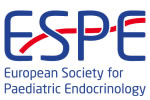hrp0082p1-d3-86 | Diabetes (2) | ESPE2014
Implementation of Effective Transition from Paediatric to Adult Diabetes Care with an Outpatient Transition Nurse
Elowe-Gruau Eglantine , Aquarone Marie-Paule , Schluter Virginie , Stoppa-Vaucher Sophie , Phan-Hug Franziska , Dwyer Andrew , Pitteloud Nelly , Hauschild Michael
hrp0082p2-d2-468 | Growth (1) | ESPE2014
Successful GH Treatment for Severe Growth Failure in Paediatric Patients with Anorexia Nervosa
Fjellestad-Paulsen Anne , Bargiacchi Anne , Doyen Catherine , Raverdy Cecile , Carel Jean-Claude , Leheuzey Marie-France , Leger Juliane
hrp0084fc5.5 | Endocrine Oncology/Turner | ESPE2015
Hereditary Turner Syndrome 46,X,rec(X)inv(p21q28) in Six Women and Four Generations: Estimation of Skeletal Effects of GH Treatment
Stoklasova Judith , Kaprova Jana , Trkova Marie , Nedomova Vera , Zemkova Daniela , Soucek Ondrej , Matyskova Jana , Sumnik Zdenek , Lebl Jan
hrp0097fc7.1 | Sex differentiation, gonads and gynaecology or sex endocrinology | ESPE2023
Polygenic scores for testosterone and SHBG are associated with hormone levels in male infants
Siegfried Busch Alexander , Lindhardt Ljubicic Marie , N. Upners Emmie , B. Fischer Margit , P Hagen Casper , Juul Anders
hrp0097rfc7.1 | Sex differentiation, gonads and gynaecology or sex endocrinology | ESPE2023
Penile width increases more clearly than penile length during minipuberty: a longitudinal study of 136 healthy infant boys
Mola Gylli , Siegfried Busch Alexander , Lindhardt Ljubicic Marie , N. Upners Emmie , Bistrup Fischer Margit , Juul Anders , P. Hagen Casper
hrp0097p1-204 | Adrenals and HPA Axis | ESPE2023
Longitudinal Changes in Serum DLK1 Concentrations During Minipuberty in Healthy Infant Girls; Association to Changes in Linear Growth and Fat Mass
Vilmann Lea , Siegfried Busch Alexander , Lindhardt Ljubicic Marie , N. Upners Emmie , Bistrup Fischer Margit , P. Hagen Casper , Juul Anders
hrp0097p2-22 | Fetal, Neonatal Endocrinology and Metabolism | ESPE2023
Hyperinsulinaemic Hypoglycaemia in Term Neonates Without Known Risk Factors Leading to Neurological Damage: A Case Series of 5 Patients From Two Regional Centres in the UK
O'Reilly Freya , Monaghan Marie , Moran Matthew , Gubaeva Diliara , Senniappan Senthil , Likeman Marcus , Giri Dinesh , Amin Sam
hrp0095rfc6.2 | Sex Development and Gonads | ESPE2022
Dynamic changes of reproductive hormones in male minipuberty: Temporal dissociation of Leydig- and Sertoli-cell activity
S. Busch Alexander , Lindhardt Ljubicic Marie , N Upners Emmie , Bistrup Fischer Margit , Lau Raket Lars , Frederiksen Hanne , Albrethsen Jakob , Holm Johannsen Trine , P Hagen Casper , Juul Anders
hrp0095rfc7.5 | Growth and Syndromes | ESPE2022
A relevant cellular model to study imprinting disorders: dental pulp stem cells
Giabicani Eloïse , Pham Aurélie , Sélénou Céline , Sobrier Marie-Laure , Linglart Agnès , Poliard Anne , Chaussain Catherine , Netchine Irène
hrp0095rfc10.6 | GH and IGFs | ESPE2022
Growth Hormone Deficiency in Adult Survivors of Childhood Brain Tumors Treated with Irradiation
Marie Baunsgaard Mette , Sophie Lind Helligsoe Anne , Tram Henriksen Louise , Stamm Mikkelsen Torben , Callesen Michael , Weber Britta , Hasle Henrik , Birkebæk Niels



